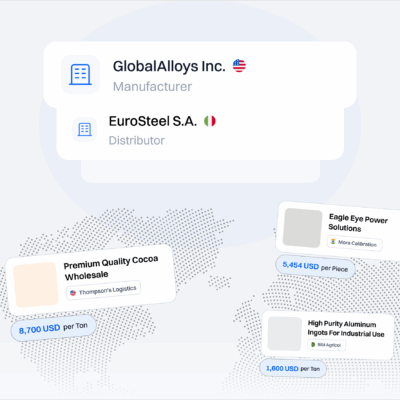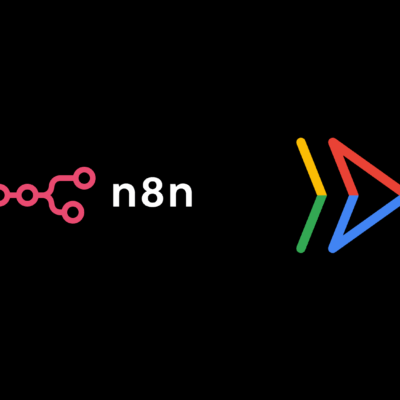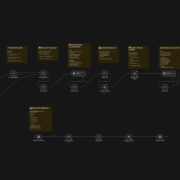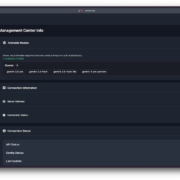
Introduction
Hybrid work, micro-services, and SaaS sprawl have pushed enterprise traffic well beyond the walls of traditional data centers. In this always-connected world, cloud-based proxy solutions provide a lightweight way to steer, secure, and optimize outbound requests—without the overhead of appliance hardware or full-tunnel VPNs. By locating proxy nodes close to major cloud backbones, these services offer low-latency hand-offs, elastic bandwidth, and policy enforcement that scales with demand. This article explains what cloud-hosted proxies are, the efficiency gains they unlock, and the implementation details organizations should weigh before adoption.
What Are Cloud-Based Proxy Networks?
Cloud-based proxies run inside public-cloud infrastructure (AWS, Azure, GCP, or regional IaaS providers). Instead of backhauling traffic to on-premise boxes, clients connect to a nearby cloud edge where the proxy applies policies—URL filtering, identity checks, IP rotation—and then relays requests to the public internet or private resources. Because the compute layer is virtual, customers can spin nodes up or down on demand, paying only for the bandwidth and CPU cycles they consume.
Modern offerings often package additional features such as zero-trust network access (ZTNA), secure web gateway (SWG) controls, and API-based provisioning. A cloud-native approach aligns with the architecture Google popularized through its “BeyondCorp” model, later formalized in NIST SP 800-207 on Zero Trust Architecture.
When the platform exposes dedicated, city-level endpoints that rotate clean residential or ISP-grade IPs, the service is marketed as nebula proxy. These endpoints couple cloud elasticity with high-reputation address space—ideal for workloads that depend on trust, speed, and geographic precision.
Performance & Operational Advantages
| Advantage | Why It Matters |
| Elastic Scalability | Instances auto-scale with traffic bursts—crucial for flash-sale scraping or DDoS-era threat hunting. |
| Global Edge Presence | Public clouds host dozens of regions and hundreds of edge POPs, letting proxy nodes terminate traffic within milliseconds of users or crawlers. The Cloudflare Learning Center highlights reduced latency as a core edge-computing payoff. |
| Integrated Security Stack | Providers weave TLS inspection, data-loss prevention, and identity-aware access into the same hop, simplifying security architecture. |
| API-Driven Automation | REST and Terraform modules let DevSecOps teams script provisioning, rotation, and decommissioning—aligning with GitOps and CI/CD pipelines. Google Cloud’s documentation on Cloud NAT offers a blueprint for infrastructure-as-code routing. |
| Cost Predictability | Pay-as-you-go meters bandwidth and compute separately; no need for appliance refresh cycles or colo contracts. |
Enterprise Use-Case Highlights
Continuous Web Scraping & Market Intelligence
E-commerce aggregators and travel fare trackers pull millions of pages daily. Cloud proxies supply elastic bandwidth and fresh IP pools, preventing rate-limit slowdowns during peak collection windows.
Ad Verification Across Regions
Marketing teams confirm that creatives render correctly in every locale. Deploying regional proxy nodes lets QA scripts fetch pages from local exit points, ensuring accurate placement and compliance.
Zero-Trust Remote Access
Instead of shipping full-network VPN clients, IT routes only approved ports or URLs through policy-enforced cloud proxies. This aligns with least-privilege principles and simplifies mobile rollout.
API Rate-Limit Testing
Product engineers benchmarking third-party APIs often need to simulate thousands of distributed clients. A cloud proxy mesh spins up on demand, distributing calls while centralizing logs for analysis.
Disaster-Recovery Traffic Shifting
When on-prem gateways fail, DNS or SD-WAN rules can redirect traffic to cloud-based proxies in minutes, maintaining policy enforcement and audit trails during outages.
Implementation Considerations
Region & POP Selection
Place proxy instances near both data sources (sites you crawl) and users (employees, contractors) to minimize RTT. Multi-region HA protects against cloud-zone failures.
Identity & MFA Integration
Leverage SAML or OIDC hooks so users authenticate with corporate credentials; enforce MFA for sensitive groups.
Egress IP Management
Decide between static IP blocks (for allow-lists) and rotating pools (for anonymity). Track allocations with IaC to avoid drift.
Performance Monitoring
Instrument metrics—latency, throughput, error rate—via cloud-native dashboards or Prometheus exporters. Alert on deviations that might indicate throttling or blacklisting.
Compliance & Data Residency
Check where logs reside and whether inspection features decrypt traffic. Align with GDPR, HIPAA, or regional data-sovereignty rules.
Cost Controls
Set cloud-provider budget alerts; tag proxy resources for chargeback. Unlimited-bandwidth tiers may appear attractive but watch for hidden egress surcharges.
Conclusion
Cloud-based proxy solutions merge the agility of public-cloud infrastructure with the policy precision of traditional gateways. By elastically scaling capacity, distributing exits across global edges, and exposing rich automation APIs, they streamline workflows ranging from high-volume scraping to zero-trust remote access. When paired with high-reputation IP pools like nebula proxy, organizations can run data-intensive, geo-sensitive operations without wrestling with latency spikes, appliance limits, or budgeting surprises. In a digital era defined by distributed teams and real-time demands, cloud-hosted proxies stand out as a pragmatic path to faster, safer, and more resilient online activity.









